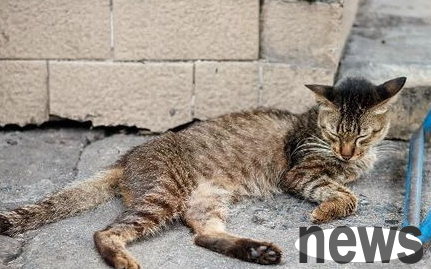Renal failure is divided into acute renal failure and chronic renal failure in terms of course and pathology. Compared with chronic renal failure in the early stage, renal function has declined when the symptoms break out. It needs to be sent to the...
Renal failure is divided into acute renal failure and chronic renal failure in terms of course and pathology. Compared with chronic renal failure in the early stage, renal function has declined when the symptoms break out. It needs to be sent to the hospital immediately. The characteristic of acute renal failure is that the renal function suddenly stops functioning, and most of the symptoms are reduced urine or acute uremia, which is often easier to judge and can be treated in time. But kidney failure is ultimately painful for cats, and we should pay attention to it in our daily feeding.

1. Pathogenic mechanism
1. Nephrotoxin is the most common cause of ARF in small animals. Nephrotoxins that can cause ARF include endotoxins, drugs, anesthetic drugs, radiocontrasts, and endogenous pigments.
2. Renal ischemia is mainly due to low renal blood perfusion and is related to severe dehydration, long anesthesia time, heart failure, hypovolumetric shock, thromboembolism (such as disseminated intravascular coagulation, vasculitis and transfusion reactions), malignant hypertension, heat stroke, excessive vascular contraction (such as the use of non-steroidal anti-inflammatory drugs, NSAID), hyperdiffusion of blood vessels (such as the administration of angiotensinase inhibitor Aceh or antihypertensive drugs).
3. Sources of infection that can cause ARF include leptospiraspp, Rocky Mountain spotted fever, Ehrlichia canis and any bacteria that can cause pyelonephritis. In short, acute pyelonephritis does not cause renal failure unless ureteral blockage occurs. Occasionally ARF can also be secondary to embolism in left heart suppurative endocarditis.
2. Clinical symptoms
1. Depression, depression, and collapse
2. Anorexia, uremia
3. Vomiting, diarrhea and melancholy
4. Other organ dysfunctions occur: a. Jaundice b. Congestion and congestion c. Shortness of breath, tachycardia d. Low temperature or high fever e. The red or earthy mucosal bricks
Acute renal failure has three different stages: (1) initiation stage, (2) maintenance stage, and (3) recovery stage. In the initial stage, treatment measures to reduce renal damage can prevent the continued development of existing acute renal failure. The maintenance phase is characterized by the formation of tubular injury and nephron dysfunction. Although treatment measures at this stage are all aimed at saving lives, they are usually rarely slowing down the severity of kidney damage, improving renal function, or promoting rehabilitation. During the recovery stage, kidney damage is repaired and kidney function is improved. If the basal membrane in the tubules is intact and active epithelial cells are present, the damage to the tubules is reversible. Although new nephrons cannot be generated and irreversible nephron damage cannot be repaired, the remaining nephrons will experience hypertrophy and sufficient compensation for the reduced nephron function. Even if the kidney function has not been fully restored, the kidney function can still be fully utilized.

III. Diagnosis:
1. Possible potential renal poisoning;
2. Acute azotemia and hyperphosphatemia occur;
3. Oliguria/anuria during ischemia, and ARF caused by Genta and cischloramyl is non-oligouric ARF.
4. Abdomen palpation, kidney area pain;
5. Renal tissue biopsy can be performed as follows: ① Can't clearly confirm, ② There is obvious persistent proteinuria, ③ The traditional method of suspected multiple systemic diseases does not have obvious effect after treatment: lasting for more than 1 to 2 days, excessive urine volume or lasting for more than 4 to 5 days, severe uremia and hyperkalemia. ④ Do histological examination to determine the prognosis. Histological signs of tubular regeneration and intact tubular base membranes indicate a good prognosis; extensive tubular gangrene and space damage base membrane mineralization indicate a poor prognosis.
IV. Treatment:
General treatment methods:
Objective: Correct hemodynamic abnormalities in the kidneys and alleviate imbalance in water and salt metabolism, and give the kidneys sufficient time to recover and compensate. The treatment response is as follows: First, the serum creatinine concentration decreases, indicating an increase in glomerular filtration; secondly, the urine production is increased (if it was originally oligouria or anuria)
Special therapy:
Liquid therapy is the main treatment method for ARF; correct the balance of fluid and electrolytes, improve the hemodynamics of the kidneys and trigger polyuria. Replenish the amount of intravenous fluid within the first 4-6hr; if cardiovascular dysfunction is suspected, it will be slow to induce it! 0.45% NaCl and 2.5% dextran or 0.9% NaCl can be used. If edema occurs, the infusion should be slow and diuretics and/or vasodilator drugs can be given. If you still have oliguria after liquid therapy treatment, one or more of the following methods can be taken. Frequentine, mannitol, low-dose dopamine. Frequency infusion with mannitol and dopamine is better than using alone. If urination cannot be promoted within 4 to 6 hours, dialysis therapy is considered. Treatment of hyperkalemia. Severe hyperkalemia (> 6-8mEq/L) (normal value: 3.0-3.5) or hyperkalemia causes cardiovascular disease. The following drugs can be used: 5% NaHCO3, 10% calcium gluconate, promote polyuria, and excrete potassium. Correct metabolic acidosis. Prevent infection. Antiemetic: Famotidine or ranitidine or camitidine.